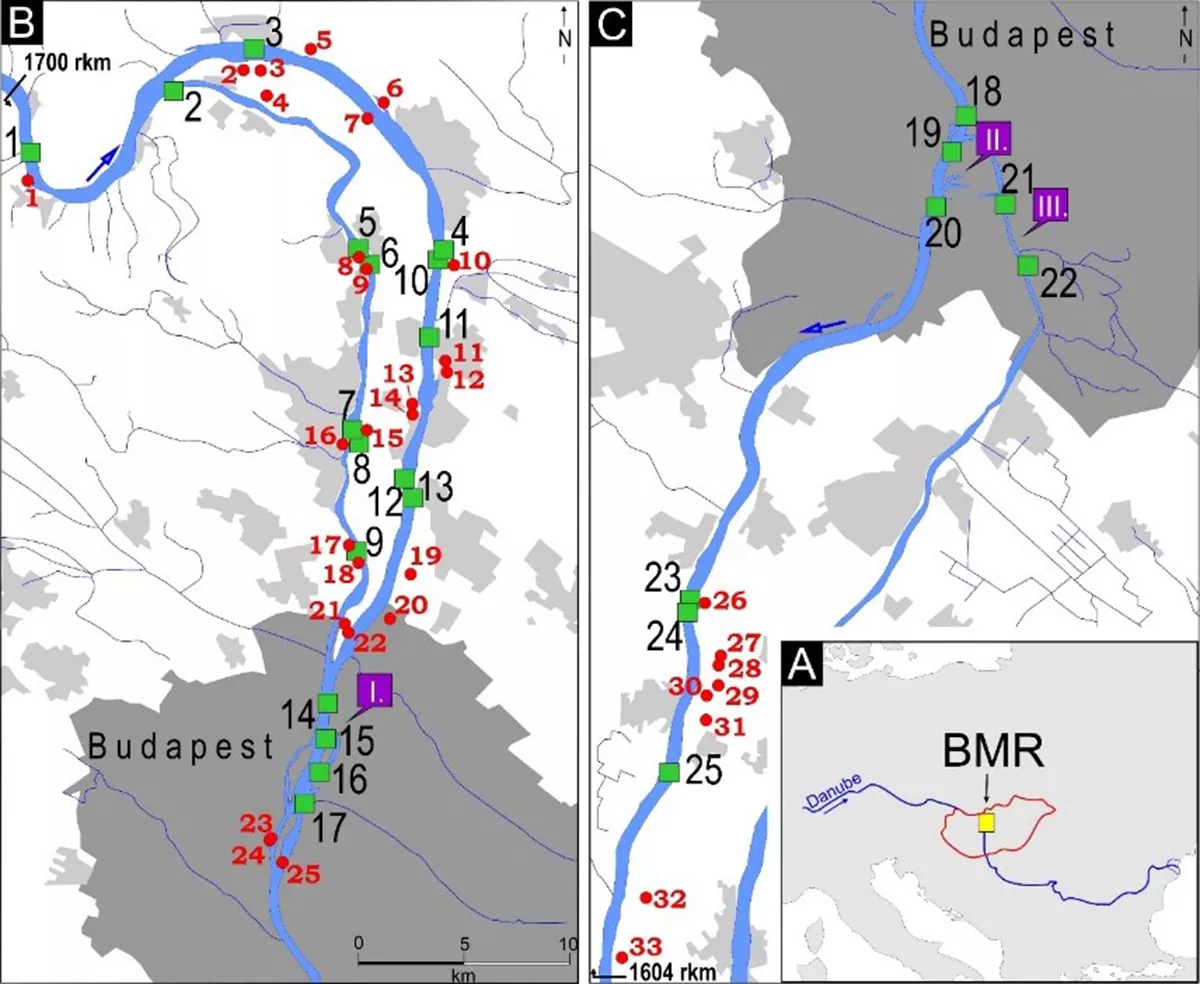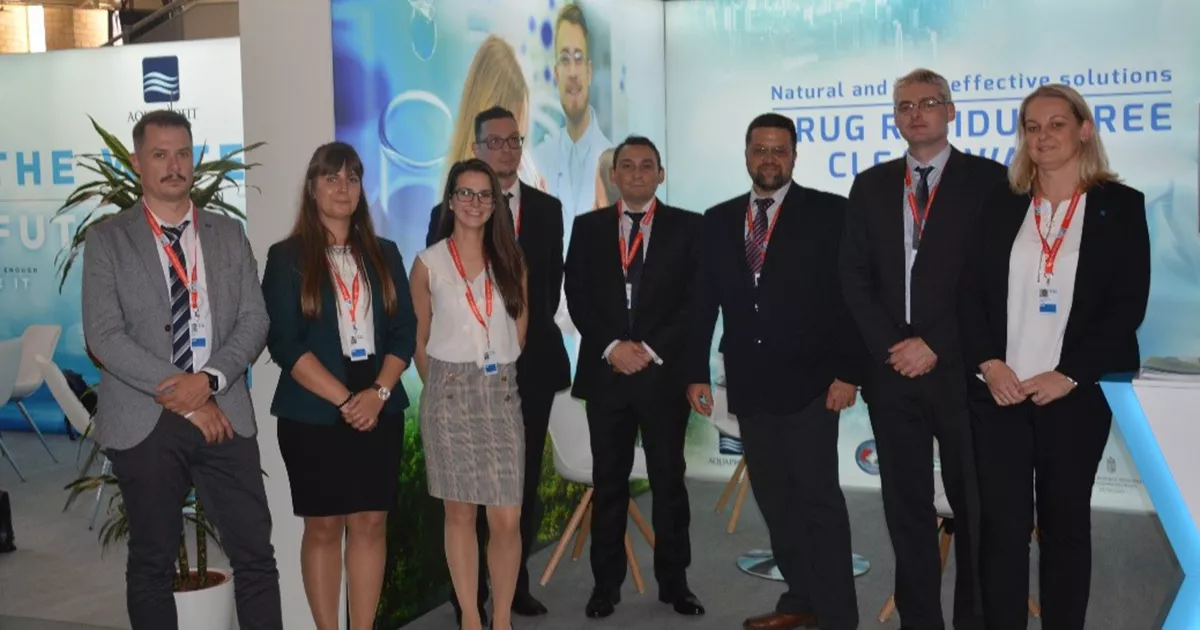As a result of the rising consumption of pharmaceuticals, the amount of drug residues entering the environment is also increasing year by year. The presence of pharmaceutically active compounds (PhACs) in surface waters is thought to pose specific risks to both the general environment and the human population, and is a serious concern worldwide. In order to assess the current situation in Hungary and to implement various innovations that could help reduce risks, special R&D&I research projects have been launched under the leadership of the ELKH Research Centre for Astronomy and Earth Sciences (CSFK), and internationally relevant results have already been achieved. The projects have contributed to the knowledge of the presence, decomposition and spatial distribution of PhACs. Innovative products and filter systems are being developed bBased on the new findings.
In the frame of the National Competitiveness and Excellence Program (NVKP), the environmental assessment of PhACs and the first pilot projects were funded by the National Research, Development and Innovation Office (NKFIH), Hungary.[1] The three-year project was launched in 2016, and the project focused on the Budapest Metropolitan Region. CSFK was the leader of the consortium, while Szent István University (Gödöllő) and two SMEs (Aquaprofit Zrt. and UTB Envirotec Zrt.) were also involved as partners. The research explored the occurrence and distribution of 111 different PhACs with the aim of analyzing their environmental risks. More than 1,000 samples were collected from untreated and treated wastewater, surface water, groundwater, tap water, sediments and aquatic life. The results have demonstrated that although current wastewater treatment technologies significantly reduce the concentration of drug residues, 75% of the monitored PhACs occurred in the treated wastewater and the concentrations of several substances (e.g. antiepileptics such as carbamazepine and lamotrigine, the anti-inflammatory diclofenac, and some cardiovascular drugs) were significantly higher than 100 nanograms/liter (ng/l) in treated wastewater.
[1] Project Nr. NVKP_16-1-2016-0003: Risks of some endocrine disruptors and developments for risk mitigation in Budapest Metropolitan Region
-

- Figure 1. The concentration of the most frequent PhACs in untreated and treated wastewater (frequency of occurrence>50%)
The researchers were among the first in the world to detect PhACs from effluents of large thermal spas.[1] It was found, however, that the concentrations of active substances in used thermal water are very low, often even lower than in the surface receivers. In the Danube, which plays a prominent role in the water supply of Budapest, a total of 52 PhACs were detected, but only 32 substances were identified in the riverbank filtrated water.[2],[3] Although some antiepileptic drugs (like carbamazepine and lamotrigine), anesthetic tramadol and lidocaine were present in more than 50% of raw drinking water samples, the efficiency of the riverbank filtration system was generally above 95%, which means that PhACs usually occur in the riverbank filtrates sporadically and only in trace levels. Due to cleaning and disinfection processes (e.g. chlorination), the amount of PhACs is significantly reduced in the drinking water supply system, which means that the detected PhACs do not pose a threat in the tap water at the moment. Hormones, which are usually of most concern, could not be identified in raw drinking water and tap water samples, and were only detected in surface waters. Research has shown, however, that the total amount of PhACs in surface waters can already be risky for some aquatic organisms. For example, there is a significant relationship between the spatial distribution pattern of some fish species and the concentration of PhACs in the water.
-

- Figure 2. Sampling area in Budapest Metropolitan Region, Hungary. Location of the study site in Europe (A); sampling sites in the northern (B) and southern (C) water resources; green squares represent the Danube sampling sites; red dots represent the drinking water abstraction wells sampling sites; wastewater treatment plants are marked with roman numerals
| Hatóanyagcsoport | Gyógyszer-hatóanyag hivatalos neve | Találatok száma | Gyakoriság | Meghatározási határérték (LOQ) | MIN | MAX | ÁTLAG | SZÓRÁS |
| db | (%) | ng L-1 | ||||||
| alkaloidák | drotaverin | 1 | 1.1 | 0.1 | 0.84 | 0.84 | 0.84 | n.r. |
| caffeine | 8 | 8.8 | 10 | 10.21 | 22.07 | 16.92 | 4.10 | |
| antidepresszánsok | citalopram | 5 | 5.5 | 0.1 | 0.13 | 0.58 | 0.28 | 0.20 |
| quetiapine | 4 | 4.4 | 0.1 | 0.15 | 6.05 | 2.08 | 2.69 | |
| mirtazapine | 3 | 3.3 | 0.1 | 0.39 | 3.84 | 1.62 | 1.92 | |
| bupropion | 2 | 2.2 | 0.5 | 0.65 | 2.39 | 1.99 | n.r. | |
| clozapine | 2 | 2.2 | 0.1 | 0.37 | 0.91 | 0.64 | n.r. | |
| metoclopramide | 1 | 1.1 | 0.2 | 1.79 | 1.79 | 1.79 | n.r. | |
| tiapride | 1 | 1.1 | 0.1 | 0.52 | 0.52 | 0.52 | n.r. | |
| trazodone | 1 | 1.1 | 0.05 | 0.12 | 0.12 | 0.12 | n.r. | |
| risperidone | 1 | 1.1 | 0.1 | 5.55 | 5.55 | 5.55 | n.r. | |
| paliperidone | 1 | 1.1 | 0.1 | 1.10 | 1.10 | 1.10 | n.r. | |
| antiepileptikumok | carbamazepine | 85 | 94.4 | 0.1 | 0.49 | 176.06 | 47.6 | 37.88 |
| lamotrigine | 48 | 53.3 | 5 | 5.18 | 849.19 | 126.46 | 130.12 | |
| nyugtatók, szorongásgátlók | cinolazepam | 19 | 21.1 | 0.1 | 0.17 | 1.13 | 0.50 | 0.23 |
| oxazepam | 13 | 14.4 | 0.1 | 0.23 | 1.58 | 0.69 | 0.44 | |
| alprazolam | 5 | 5.5 | 0.1 | 0.12 | 0.30 | 0.17 | 0.07 | |
| nordiazepam | 4 | 4.4 | 0.1 | 0.11 | 0.38 | 0.19 | 0.13 | |
| diazepam | 3 | 3.3 | 0.1 | 0.16 | 0.25 | 0.19 | 0.05 | |
| temazepam | 1 | 1.1 | 0.1 | 0.15 | 0.22 | 0.22 | n.r. | |
| zolpidem | 1 | 1.1 | 0.01 | 0.04 | 0.04 | 0.04 | n.r. | |
| szívgyógyszerek | verapamil | 7 | 7.7 | 0.05 | 0.24 | 4.78 | 1.35 | 1.86 |
| perindopril | 5 | 5.5 | 0.1 | 0.22 | 1.11 | 0.52 | 0.34 | |
| losartan | 3 | 3.3 | 0.1 | 0.15 | 0.66 | 0.37 | 0.26 | |
| metoprolol | 1 | 1.1 | 0.1 | 0.73 | 0.73 | 0.73 | n.r. | |
| bisoprolol | 1 | 1.1 | 0.5 | 0.66 | 0.66 | 0.66 | n.r. | |
| kábítószerek, érzéstelenítők, ill. metabolitjaik | benzoyl-ecgonine | 13 | 14.4 | 0.1 | 0.13 | 1.20 | 0.39 | 0.37 |
| cocaine | 1 | 1.1 | 0.05 | 0.27 | 0.27 | 0.27 | n.r. | |
| ketamin | 2 | 2.2 | 0.5 | 0.63 | 1.15 | 0.89 | n.r. | |
| helyi érzéstelenítők | lidocaine | 74 | 82.2 | 0.1 | 0.11 | 6.10 | 0.97 | 0.97 |
| gyulladáscsökkentők | diclofenac | 1 | 1.1 | 0.5 | 1.55 | 1.55 | 1.55 | n.r. |
| opioidok, fájdalomcsillapítók | tramadol | 62 | 68.8 | 0.1 | 0.12 | 26.72 | 2.62 | 3.78 |
Table 1. Concentrations of all pharmaceutically active compounds (PhACs) found to exceed their limit of quantification (LOQ) value in well water (MIN: measured minimum value,
MAX: measured maximum value, Mean: average of the measured values > LOQ).
Due to the increase in drug consumption, the large number of human and veterinary PhACs entering the waters, their detectable appearance in riverbank filtered water and the synergistic effects between drugs, it is crucial to monitor PhACs in the environment; at the same time, scientific and economic actors must stimulate initiatives targeted at risk reduction. As a result, in the second phase of the project, the partners began developments to reduce the magnitude of active substances released into the environment for the riskiest compounds identified in the basic research. These efforts were aimed to produce internationally marketable products that can effectively diminish the amount of PhACs.
Laboratory research aimed at developing new adsorbents was launched at CSFK in 2019. Initially, natural substances (e.g. plants, soil) capable of adsorbing PhACs cost-effectively were investigated.[1] The developments launched within the framework of the NVKP project were presented in 2019 under the brand name CLEAREADY at the Water Expo of Budapest Water Summit (BWS). [2]

- Figure 3. Partners at the Budapest Water Summit
From 2020, further research is supported by the Eötvös Loránd Research Network. With regards to scientific and market opportunities, the research group is supervised by the Director-General of CSFK. Cooperation and flexible collaboration between former consortium members will be essential for industrial validations and the testing of prototypes. Due to the international importance of reducing environmental and health risks, product development, business planning and sponsorship will also be assisted by the Health Venture Lab network, supported by the EIT (European Institute of Innovation & Technology) under its Reactor Program from September 2020.
[1] Project Nr. NVKP_16-1-2016-0003: Risks of some endocrine disruptors and developments for risk mitigation in Budapest Metropolitan Region
[2] Jakab et al. 2020. Thermal baths as sources of pharmaceutical and illicit drug contamination. Environ. Sci. Pollut. Res. https://doi.org/10.1007/s11356-019-06633-6.
[3] Kondor et al. 2020. Occurrence of pharmaceuticals in the danube and drinking water wells: Efficiency of riverbank filtration. Environ. Pollut. 265. https://doi.org/10.1016/j.envpol.2020.114893
[4] Kondor et al. 2020. Dataset of pharmaceuticals in the Danube and related drinking water wells in the Budapest region. Data in Brief 32. https://doi.org/10.1016/j.dib.2020.106062
[5] Szabó et al. 2020. Investigation of the sorption of 17α-ethynylestradiol (EE2) on soils formed under aerobic and anaerobic conditions. Chemosphere 240. https://doi.org/10.1016/j.chemosphere.2019.124817